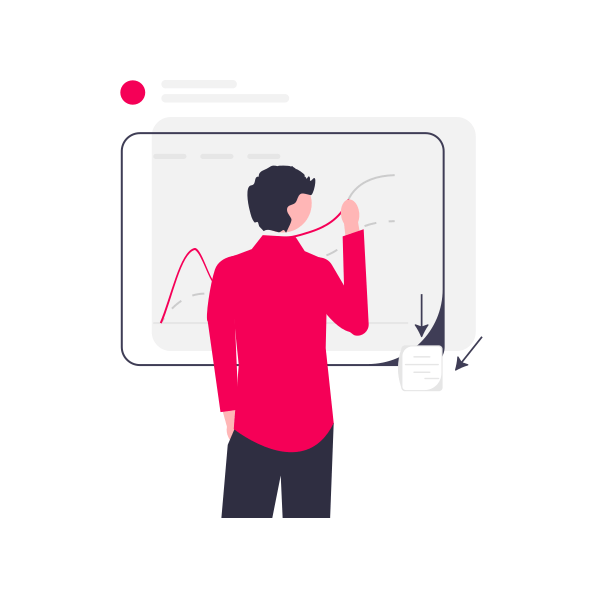On-page optimization is a fundamental aspect of SEO, ensuring that your content is not only high quality but also effectively structured to rank well in search engine results. This guide delves into the essential strategies for on-page optimization, offering insights from a top SEO agency to help you publish content that drives organic traffic and improves visibility.
Understanding On-Page Optimization
On-page optimization refers to the practice of enhancing individual web pages to rank higher and earn more relevant traffic in search engines. Unlike off-page SEO, which focuses on building links and other external factors, on-page SEO involves optimizing elements within the content itself.
Key Elements of On-Page Optimization
To effectively optimize your content, you need to focus on several critical elements:
Title Tags: The title tag is one of the most important on-page SEO factors. It should include primary keywords and provide a clear, concise description of the content.
Meta Descriptions: Although meta descriptions don’t directly influence rankings, they play a crucial role in click-through rates. A well-crafted meta description should entice users to click on your link by summarizing the content compellingly.
Header Tags: Header tags (H1, H2, H3, etc.) structure your content, making it easier for readers and search engines to understand the hierarchy and main topics.
Content Quality and Relevance
Content is king in the world of SEO. High-quality, relevant content that provides value to users is essential for effective on-page optimization. Consider the following:
Keyword Usage: Use relevant keywords naturally throughout your content. Avoid keyword stuffing, which can harm readability and SEO performance.
Content Length: Longer content tends to rank better, but only if it is relevant and engaging. Aim for comprehensive coverage of your topic while maintaining quality.
Readability: Write in a clear, engaging style that is easy to understand. Use short paragraphs, bullet points, and subheadings to enhance readability.
Optimizing Images and Multimedia
Images and multimedia enhance user experience but need to be optimized for SEO. Here’s how:
Alt Text: Include descriptive alt text for images. This not only helps with SEO but also improves accessibility for users with visual impairments.
File Size: Compress image files to reduce load times. Fast-loading pages improve user experience and search engine rankings.
Multimedia Elements: Optimize videos and other multimedia elements by using appropriate tags and descriptions.
Internal Linking Strategies
Internal linking helps distribute page authority across your site and improves navigation. Effective internal linking includes:
Relevant Anchor Text: Use descriptive anchor text that provides context about the linked page.
Link to Important Pages: Ensure that key pages receive sufficient internal links to enhance their visibility and authority.
Mobile Optimization
With the increasing use of mobile devices, mobile optimization is crucial. Ensure your content is mobile-friendly by:
Responsive Design: Use a responsive design that adjusts to various screen sizes.
Mobile-Friendly Navigation: Simplify navigation for mobile users, ensuring that all essential elements are easily accessible.
Technical SEO Factors
Several technical factors impact on-page optimization:
URL Structure: Use clean, descriptive URLs that include keywords and are easy to read.
Site Speed: Ensure your site loads quickly by optimizing images, leveraging browser caching, and minimizing HTTP requests.
Schema Markup: Implement schema markup to provide search engines with additional information about your content, enhancing visibility in search results.
User Experience and Engagement
User experience (UX) plays a significant role in SEO. To enhance UX:
Clear Layout: Design a clear and intuitive layout that guides users to important content.
Engaging Content: Create content that resonates with your audience and encourages interaction, such as comments or social shares.
Monitoring and Adjusting Your Strategy
On-page optimization is an ongoing process. Regularly monitor your performance using tools like Google Analytics and adjust your strategy based on:
Performance Metrics: Track metrics such as organic traffic, bounce rates, and conversion rates.
Algorithm Updates: Stay informed about search engine algorithm updates and adjust your content strategy accordingly.
Frequently Asked Questions (FAQs)
1. What is on-page SEO?
On-page SEO refers to the optimization of individual web pages to rank higher and earn more relevant traffic in search engines. This includes optimizing content, title tags, meta descriptions, header tags, and other on-page elements.
2. How important are title tags for SEO?
Title tags are crucial for SEO as they provide a concise description of the page’s content and include primary keywords. They help search engines understand the topic of the page and influence click-through rates.
3. What role does content quality play in SEO?
Content quality is vital for SEO. High-quality, relevant content that provides value to users tends to rank better in search results. It should be engaging, well-researched, and free of grammatical errors.
4. How can I optimize images for SEO?
Optimize images by using descriptive alt text, compressing file sizes to improve load times, and ensuring that multimedia elements are properly tagged and
described.
5. Why is mobile optimization important for SEO?
Mobile optimization is crucial because more users are accessing websites via mobile devices. A mobile-friendly site improves user experience and can positively impact search engine rankings.
6. What is internal linking and why is it important?
Internal linking involves linking to other pages within your own site. It helps distribute page authority, improves site navigation, and enhances the user experience by providing additional relevant content.
7. How does technical SEO impact on-page optimization?
Technical SEO factors, such as URL structure, site speed, and schema markup, impact how search engines crawl and index your site. Proper technical SEO ensures that your site is easily accessible and understandable by search engines.
8. What tools can I use to monitor my on-page SEO performance?
You can use tools like Google Analytics, Google Search Console, and various SEO audit tools to monitor your on-page SEO performance. These tools provide insights into traffic, rankings, and other key metrics.
9. How often should I update my on-page SEO strategy?
Regular updates to your on-page SEO strategy are necessary to adapt to changes in search engine algorithms and user behavior. Periodically review and adjust your strategy based on performance data and industry trends.
10. What is the role of user experience (UX) in on-page SEO?
User experience (UX) influences on-page SEO by affecting how users interact with your site. A positive UX, characterized by clear layout, engaging content, and easy navigation, can improve user retention and boost search rankings.
Effective on-page optimization is essential for improving your website's visibility and driving organic traffic. By focusing on critical elements such as content quality, meta tags, internal linking, and mobile optimization, you can enhance your site’s SEO performance. Regularly monitoring and adjusting your strategy will help ensure that your content remains relevant and competitive in search engine results.
Get in Touch
Website – https://www.webinfomatrix.com
Mobile - +91 9212306116
Whatsapp – https://call.whatsapp.com/voice/9rqVJyqSNMhpdFkKPZGYKj
Skype – shalabh.mishra
Telegram – shalabhmishra
Email -info@webinfomatrix.com










 English (US) ·
English (US) ·